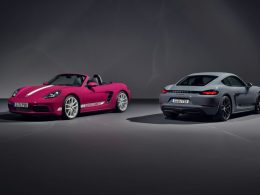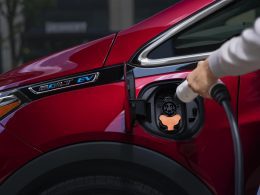Introduction:
Mercedes-Benz continues its electrification journey. Presenting a diverse spectrum that ranges from the sleek EQS SUV to the rugged 2024 Mercedes-Benz eSprinter. While the EQS SUV showcases opulence and cutting-edge technology. The eSprinter takes a pragmatic approach, emphasizing quiet, smooth, and responsive electric operation. In this comprehensive review, we explore the latest iteration’s improved range, efficiency, and the pivotal role electric vans are poised to play in the coming decade.
Charging Ahead: Range and Efficiency:

Unlike its predecessor with a limited range, the second-generation eSprinter boasts a significant upgrade. Aligning it with the demands of the North American market. Fitted with a robust 113.0-kWh lithium-iron-phosphate battery. The eSprinter is estimated to achieve approximately 230 miles of EPA range, making it a compelling choice for local deliveries. The inclusion of a standard heat pump addresses cold-weather efficiency concerns. While Eco and Maximum Range drive settings enhance efficiency by limiting power.
Performance and Charging Capabilities:
The Mercedes-Benz eSprinter’s rear-mounted electric motor is available in two outputs, with the high-output variant delivering 201 horsepower and 295 pound-feet of torque. Despite its substantial curb weight, the van demonstrates adequate acceleration, particularly above 55 mph. The 75-mph limiter encourages highway discipline, while regenerative braking options and an efficient heat pump contribute to a well-rounded driving experience. The eSprinter’s compatibility with DC fast chargers allows a rapid recharge from 10 to 80 percent in a claimed 42 minutes, offering practicality for commercial use.
On the Road: Surprising Road Manners:

Beyond its utilitarian purpose, the eSprinter surprises with commendable road manners. Carrying a partial load, the van adeptly handles bumps, absorbing impacts and minimizing rear-axle hop. Its performance on curvy mountain roads at 55 mph showcases minimal body roll and precise steering, instilling confidence even in challenging terrains. Mercedes-Benz’s commitment to ensuring a comfortable and controlled ride sets the eSprinter apart in the electric van segment.
Interior Comfort and Practicality:
Inside, the eSprinter mirrors its combustion-powered counterpart, emphasizing comfort and practicality. While the leather armrests and supportive seats create a welcoming environment, the cabin’s upright nature is influenced by the cargo-area partition wall. Technological sophistication is evident in the high-quality central binnacle, featuring the latest Mercedes infotainment system and the intuitive “Hey Mercedes” voice assistant. Practical storage solutions, a flat floor, and an optional rear-camera mirror enhance the overall driving experience.

Market Placement and Competition:
As the eSprinter enters the competitive landscape of electric commercial vans, it faces rivals such as the Rivian EDV, Ford E-Transit, and Ram ProMaster EV. Priced at $74,181, the eSprinter positions itself above the Ford and Ram but below the Rivian. Mercedes’s emphasis on superior range aligns with the eSprinter’s positioning, even though payload capacities are comparable. As the electric commercial van segment expands, the eSprinter aims to balance performance, range, and affordability in a rapidly evolving market.
Conclusion:
The 2024 Mercedes-Benz eSprinter emerges as a pragmatic yet sophisticated player in the electric commercial van space. With its improved range, efficient charging capabilities, and surprising road manners, it offers a compelling option for businesses engaged in local deliveries. As Mercedes-Benz contributes to the proliferation of electric vans, the eSprinter exemplifies a harmonious blend of practicality, performance, and technological innovation, setting a promising standard for the future of commercial electric vehicles.












